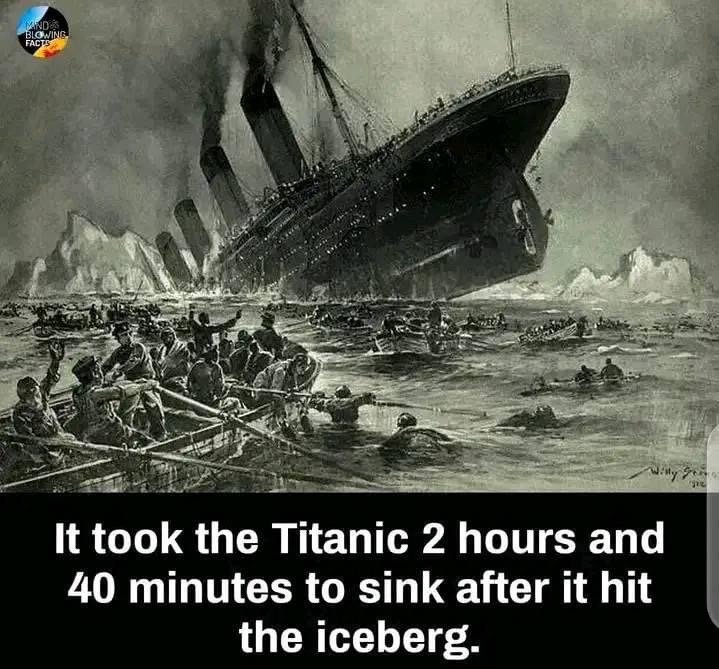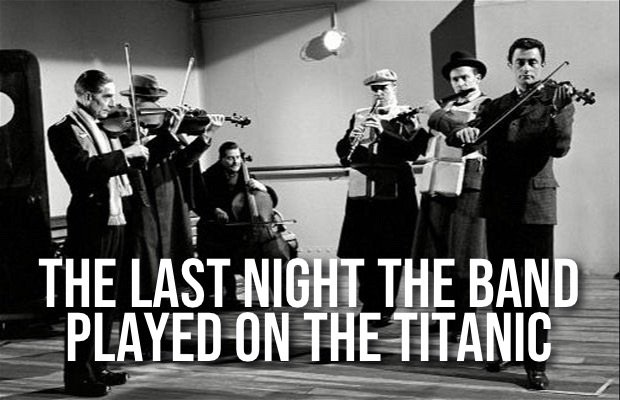Welcome to our historical journey into one of the most infamous maritime disasters in modern history – the sinking of the RMS Titanic. The grand luxury liner’s maiden voyage began with pomp and anticipation on April 10, 1912. Yet, destiny had a different course in store. On that fateful night of April 14, the Titanic collided with an iceberg, setting off a chain of events that would forever leave an indelible mark on the annals of maritime history. In this article, we’ll delve into the tragic events of that night, the acts of heroism displayed amidst chaos, and the lasting impact of the Titanic’s ill-fated voyage.

The Collision with the Iceberg
The Titanic, under the seasoned command of Captain Edward Smith, set sail across the icy waters of the North Atlantic. Tragically, the iceberg proved elusive until it was too late. The massive ice mass scraped against the ship’s starboard side, puncturing its hull and flooding several compartments, sealing the vessel’s fate.
A Race Against Time
In the wake of the collision, the ship’s crew and officers swiftly mobilized to contain the flooding and prevent the Titanic from sinking. Distress signals were sent to nearby vessels, beseeching aid in the treacherous waters. Despite the valiant efforts, it became apparent that the unsinkable vessel was succumbing to the forces of the frigid ocean, prompting the commencement of evacuation procedures.

Evacuation and Lifeboats
During the evacuation, the crew encountered a daunting challenge – the Titanic had lifeboats only sufficient to accommodate around half of its passengers and crew. The previous presumption of invincibility had dire consequences, leaving many souls without the means of escape.
Acts of Heroism
Amidst the unfolding tragedy, tales of extraordinary bravery and selflessness emerged. Crew members, musicians, and certain passengers gallantly aided in the evacuation, placing the lives of others above their own. Their remarkable acts of heroism have become emblematic of human resilience in the face of adversity.
The Sinking
In the early hours of April 15, 1912, the Titanic’s stern elevated as the bow submerged into the depths. The vessel broke in two before vanishing beneath the unforgiving waves of the North Atlantic. The frigid waters claimed the lives of countless souls, forever immortalizing the tragedy as a symbol of human vulnerability.
Rescue and Aftermath
Amidst the devastation, the RMS Carpathia responded to the Titanic’s distress calls and emerged as a beacon of hope. It gallantly rescued survivors, offering solace amidst the sea of sorrow. Nevertheless, over 1,500 souls perished, making the Titanic catastrophe a somber reminder of the fragility of human endeavor.

Legacy and Lessons
The Titanic disaster reverberated across the world, reshaping maritime regulations and inspiring advancements in safety protocols. The establishment of the International Ice Patrol aimed to prevent similar tragedies, safeguarding future voyages. The memory of the Titanic continues to be a haunting symbol of human ambition humbled by the unyielding forces of nature.

As we traverse the historical account of the Titanic tragedy, we remember the bravery, the loss, and the enduring legacy that echoes through time. The sinking of the Titanic stands as a poignant testament to the resilience of the human spirit and a reminder of the critical lessons learned from this harrowing event. May its memory endure as we honor the lives lost and strive to create a safer and more compassionate world.
As an Amazon Associate we earn from qualifying purchases through some links in our articles.




